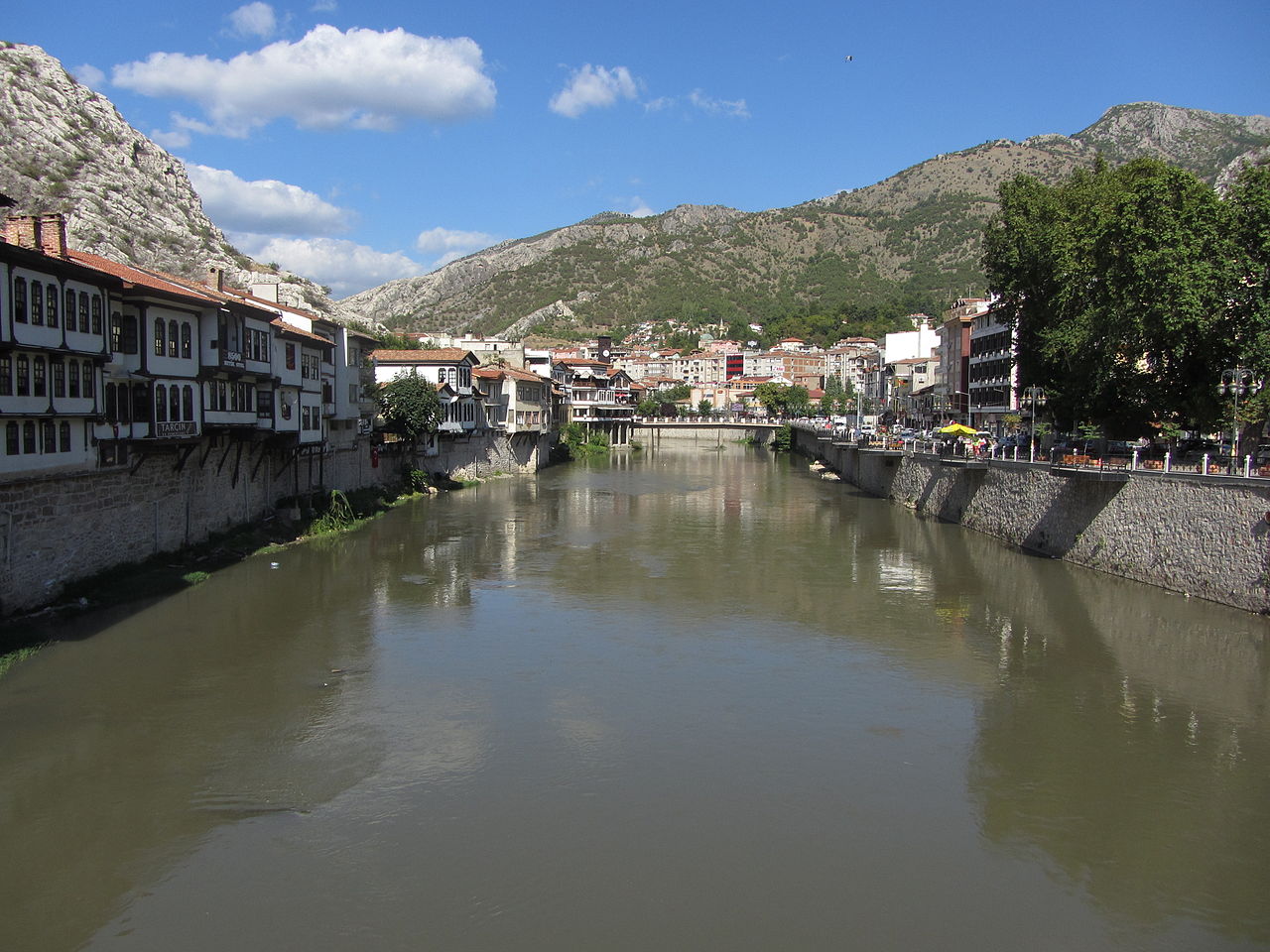Amasya
Amasya

History
Amasya, ancient Amaseia, was established approx. 4th c. p.n.e., however, the most important period in the history of the city begins with its elevation to the rank of the capital of the kingdom of Pontus (for King Mithridates II, at the beginning of the 3rd century. p.n.e.). Amasya flourished during the kingdom's glory days, but Mithridates VI Eupator moved in 120 r. p.n.e. your capital city to your place of birth – Synopsis. Several decades later, the great traveler and geographer Strabo was born in Amasya (ok. 63 – 20 p.n.e.), who wrote 17 books of the work of Geographica, summarizing his trips to Europe, West Asia and North Africa (there he reached the borders of Ethiopia). Mithridates VI waged long wars with Rome, and as a result of the eventual defeat of v 64 r. p.n.e. (lost the battle with Gnaeus Pompey, and this one destroyed Amasya) the kingdom of Pontus became another Roman province. Mithridates fled to the Crimea, but through his brutal conduct he will lead! to rebellion, headed by his son Farnaces. At last, w 63 r. p.n.e., Mithridates committed suicide. After a few years, his son made trouble for Rome once more – took Bithynia. This time, however, Julius Caesar dealt with him quickly and finally in the Battle of Zela (47 p.n.e.). Caesar informed his friends about the victory in memorable words: come, look, vici (I have arrived, I saw, I won). After the Romans, the Byzantines resided in the city, bringing no news to it except that, that the city was established as the seat of the bishop, who, moreover, took part in the Council of Nicaea (325).
W 712 r. Amasya fell into the hands of the Arabs, but not long after that, Emperor Leo III recaptured the city from the enemy's hands. After the lost battle between the Byzantines and the Seljuks at Manzikert (1071) The rulers of the Danishmendidz dynasty began to rule here, who made the city the capital of their emirate, eventually transforming the name Amaseia into Amasya. Seljuk ruled in turn, Mongols, Turkish Eretnids, until v 1391 r. it was won by the Ottoman Sultan Beyazid I.. Because both for the Seljuqs, Mongols, and the Ottomans, Amasya was an important trading center, cultural and scientific, many buildings from those times have survived. At one time, the city was also important from the military point of view, because from here the Turks went on expeditions deep into Persia. Many princes, before they became sultans, ruled here, learning the art of war (m.in. Muhammad I, Mehmed II or Bejazid II). During the War of Independence, Amasya played an important role. It was here that the first written declaration on the founding of the Turkish Republic was made.
Amasya – Places, which are worth seeing
It's probably best to start with the famous rock tombs, which can be visited at. 8.30 – 20.00, introduction: 0,7 USD, students: 0,35 USD. We'll get to them, crossing the river with the Alcak Bridge standing near the post office. After crossing the bridge we go straight to the stairs, which will lead us to the very top. First, we will walk past a series of walls, which are the remains of the so-called. Girls' Palace (Girls' Palace). Originally, the palace of the kings of Pontus stood here, later the Seljuqs, and finally the Ottomans. The tombs above are from Hellenistic times, and they once hid Pontic kings. Their facades are high on 12 m, originally they were probably lined with marble, but today they do not represent high artistic value. They are all similar to each other (a straight wall with one window surrounded by a gentle arch), one, thanks to the preserved inscription, was identified as the tomb of King Farnaces I. (ok. 185 – 159 p.n.e.). The first tomb on the left was converted into a chapel in Byzantine times, there are still traces of 11th-century frescoes inside.
There is a castle at the very top. The only way to get to it is officially around the hill, from the north, which will take us over 2 at, because the distance from the center is 4 km, and at least halfway up we go uphill. To get to the castle, we have to get to Kus Koprusu (The Bird Bridge). Having passed the madrassa (on the right side just after the bridge), we continue along the main road, until we finally come across signposts with the word Kale (directing us to the left). If someone has fortunately acquired basic climbing skills, is equipped with good shoes and knows his / her own abilities, maybe try to get to the castle by shortcuts from under the tombs, right away, where the palace used to be (between the two tombs on the left and the three on the right). It will be most convenient to take the right gully, or rather a switch and carefully climb to the partially visible castle. Attention: the road is not the safest, therefore the author is not responsible for playboys, who try to do something, what they cannot cope with.